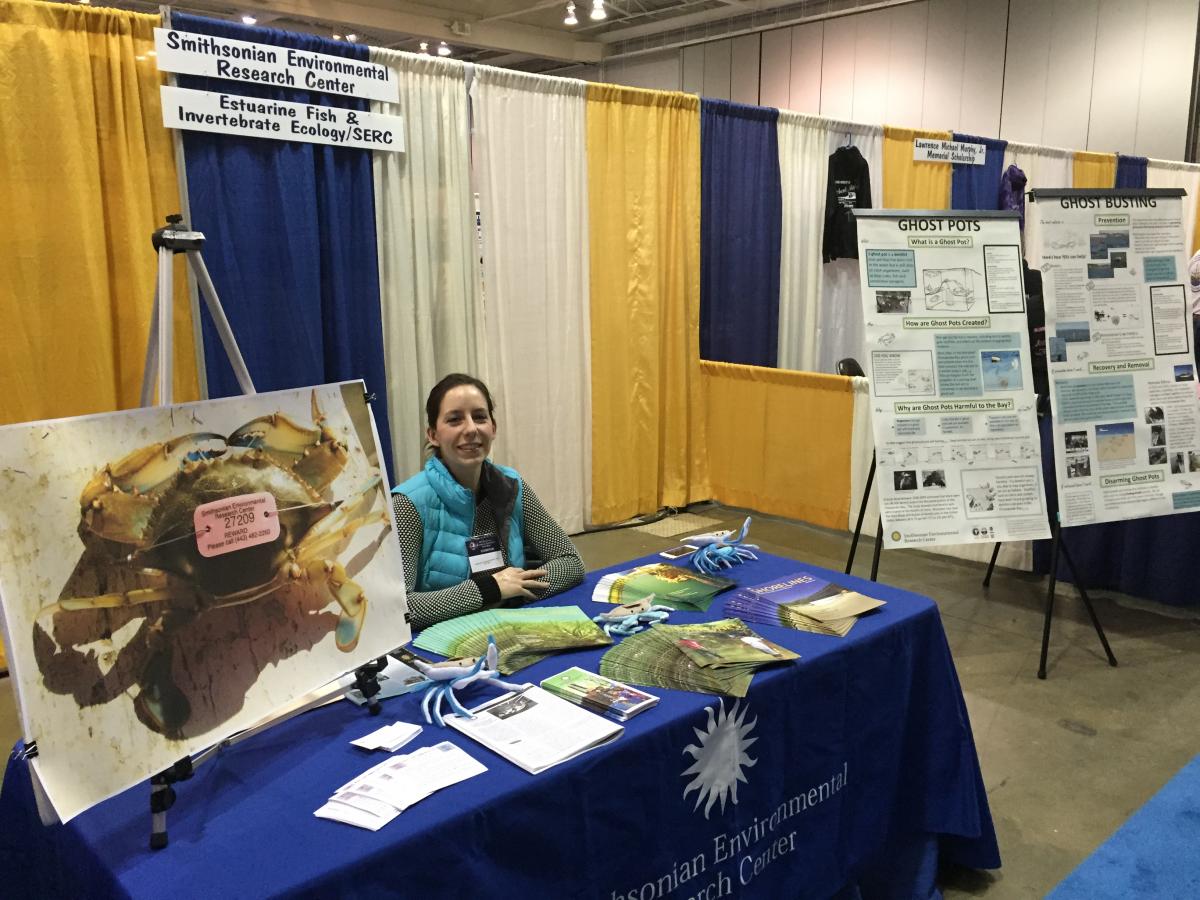- Home
- Research
- Projects
- Impact of Ghost Pots
- Impact of Ghost Pots
Impact of Ghost Pots
Project Title: Ghost Crab Pots in Maryland's Chesapeake Bay.
Project Goal: The goal of this study is to understand and reduce the negative impacts of derelict fishing gear (DFG) like ghost pots in the Maryland portion of the Chesapeake Bay.
Project Description:
Much of today’s recreational and commercial fishing gear is made out of metal and synthetic materials that are able to withstand all kinds of weather and wear. Because gear like nets, lines, crab pots, and other equipment are durable, they can persist in marine and estuarine environments long after they’ve been lost, abandoned, or discarded. Lost gear, or derelict fishing gear (DFG), can be a real problem in these environments because it can trap and kill target and non-target species, damage underwater habitats, create economic loss through removal of economically important fishery species and gear replacement, and contribute to marine debris and pollution. Understanding the impacts of DFG and the best strategies for reducing impacts are important for improving the sustainability of fisheries.
Our approach:
To understand the impact of ghost pots in the Maryland portion of the Chesapeake Bay, we have collected and assembled information from various sources, including watermen, peer-reviewed journals articles, and reports, into two searchable online databases and created public education and outreach materials. We also include information on new technologies and methods aimed at reducing pot loss, increasing pot recovery, and neutralizing pots after loss.
Maryland Blue Crab Ghost Pot Workshop
We are actively involved in several forms of public education and outreach, including public seminars, workshops, participatory science, trade shows and special events. One such event was the Maryland Blue Crab Ghost Pot Workshop – a workshop where the blue crab fishing community could discussed their experiences with pot loss and recovery, and contribute valuable information towards pot loss prevention.
As part of the workshop, we created a spreadsheet with over 200 pieces of literature and informational material from a variety of sources, including peer-reviewed journal articles, published and unpublished reports, graduate theses, presentations, online articles, book chapters, scientific posters, technical memoranda, informational flyers, conference proceedings, and regulations. The main focus of this literature review was to address the methods, techniques, and technologies that have been tested and used to reduce or prevent ghost fishing by ghost pots.
Downloads from our workshop include:
Commercial Fishermen's & Aquaculture Trade Expo
Another valuable public engagement and outreach event related to our ghost pot study is the Commercial Fishermen's & Aquaculture Trade Exposition. For over a decade we’ve had a booth at the Commercial Fishermen's & Aquaculture Trade Expo. Organized by the Maryland Watermen’s Association, the Expo is the only one of its kind in the mid-Atlantic region and attracts thousands of commercial fishermen, charter boat captains, aquaculturists, scientists, educators and the public. It’s a wonderful opportunity to connect with industry members, discuss our research and learn about their experiences with ghost pots.
Ghost Pot Education Displays
These education displays debuted at the 2015 Expo to raise awareness to the hazards related to DFL like ghost pots. If you would like to use these displays for educational purposes, please feel free to download them and credit SERC.
Download these educational displays:

Media and Links
Want to learn more about derelict fishing gear, ghost pots, other downloadables, and media coverage of our workshop? Check out these links:
